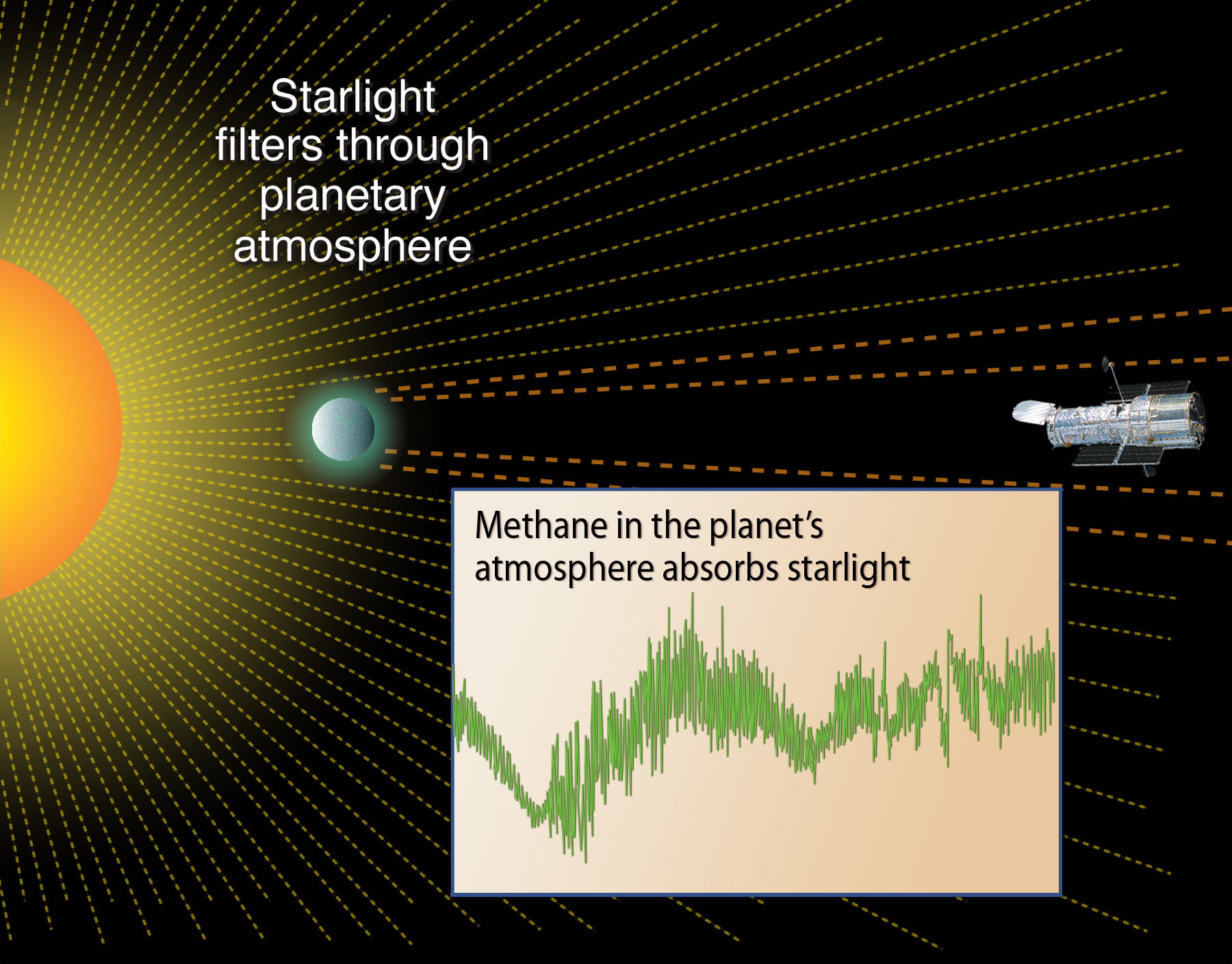
Hubble Planet-189733b Methane Absorption
Illustration: NASA's Hubble Space Telescope (HST) has made the first detection ever of an organic molecule in the atmosphere of a Jupiter-sized planet orbiting another star. This breakthrough is an important step in eventually identifying signs of life on a planet outside our solar system. The molecule found by Hubble is methane, which under the right circumstances can play a key role in prebiotic chemistry – the chemical reactions considered necessary to form life as we know it. This discovery proves that Hubble and upcoming space missions, such as NASA's James Webb Space Telescope, can detect organic molecules on planets around other stars by using spectroscopy, which splits light into its components to reveal the "fingerprints" of various chemicals.
